October 2-9, 2021
1.
It’s early spring, 2021, and we’re sitting next to the Sandy River outside of Troutdale, eating a late lunch. Out of nowhere—it’s always out of nowhere—Krista asks me if I want to go to Yosemite this summer.
“Oh, maybe! Where?”
“Well…” she feigns uncertainty for a moment, then dives in, talking fast. “We could start at Tuolumne, follow the PCT north for a while, then maybe descend to the Grand Canyon of the Tuolumne, and follow that back up?”
“So… you’ve got this planned?”
She smiles.
October 2
2.
We leave Portland early, and drive south through the now-familiar route: I5 to Eugene; over Willamette Pass and down to Klamath Falls; through parched farms and pastures east of Shasta down to Susanville and Reno; then finally up into the Sierra as the sun sets, early season snow glowing pink and red and gold on the soft domes of Sonora and northern Yosemite.
We arrive at our favorite little hotel in Lee Vining well after dark, and, improbably, my dad’s there too, having just finished his own jaunt in the Sierra further south. The front desk guy’s got a bottle of beer my dad gave him to give us, and a request for us to stop by his room, around the corner from ours.
We do, and spend an hour looking at maps.
October 3
3.
The permit office in Tuolumne Meadows is nearly empty, a different world from the long lines and prowling cars of midsummer.
The ranger looks up our route and smiles. Krista tells him about her trip here years ago, the smoke and broken toe, her decision to keep going. I’m vaguely worried the two of them are going to run away together.
I wouldn’t blame her.
4.
A storm’s supposed to come through in a few days, snow up here and heavy rain down in the Grand Canyon, where we’re supposed to be. The ranger warns us profusely, but also chuckles at our—well, at Krista’s—resolve. “We’ve seen snow.” He gives us a parking pass, on which he’s written: “Has been warned about the weather. Has chains.”
From the office, we drive west to Tenaya Lake, the first lake I saw in the Sierra, after driving overnight from Eugene. We stumble around for a few miles, me already sick from altitude, but it’s so so beautiful here. Yellow and orange in the trees, stark against the shining white granite domes. Polly and Dozier Domes reflected in the lakes still, smokey surface.
Here and there tourists in bright new boots with red laces pose for pictures, and I pose too, making Krista take a shot every fifty feet. “You know these all look the same?”
Back in Lee Vining the day gets cold, and the sun sets early to a black sky full of pin-prick stars. We watch Food Network or something on the hotel’s tiny TV, packing and repacking, trying to fit in extra coats.
October 4
5.
We wake early and enter the Park before anyone’s working the entrance booth. A note on the side tells us to have a beautiful time in this beautiful place.
It’s smokier than yesterday, and colder. The highway through Tuolumne’s deserted, frost-covered cars parked haphazardly on the icy shoulders.
We park across from boarded up visitor center, futz with boots and water and anxiety for a while, then set out north through granite and meadows and moldering thin fingers of forest. The Tuolumne River meanders in broad bends through its perfectly flat floodplain, its edges shining white with frozen reflected light. Every so often filtered sun will hit the rime-covered rocks on the river’s edge just perfectly, setting wavy rainbows of light to reflect through the morning fog.
6.
After miles of meadow the trail enters a steep canyon bordered by sheer granite domes on either side, then drops with the river toward Glen Aulin. The waterfalls have names—Tuolumne Falls, White Cascade—but it’s impossible to know where they begin or end in the icy white confusion of the river’s rushing. It’s really just one unbroken falls, five hundred feet from the end of Tuolumne Meadows to the river’s junction with Cold and Conness Creeks.
7.
Glen Aulin’s a strange outpost of abandoned civilization, tent pads and picnic tables and shining bits of metal—the foundations of yurts or temporary housing, now down for the season.
We lunch at a broad stock bridge across the Tuolumne River. Someone’s posing for cell phone pictures across the way, shouting instructions at their patient partner. They’re the last people we’ll see for five days.
8.
My stomach’s weird with altitude and sleeplessness after lunch, as we climb up through Cold Canyon to the unnamed pass between Tuolumne and Return Creek.
Krista’s far faster than me, and waits patiently at the top, as I take a full hour to go a mile or two. I’m dizzy and sick, breathing too fast and walking too slow. “You okay?”
She smiles and leads the way into the granite and long grass meadows of upper Cold Canyon. The fields are all yellow and orange for fall, bordered by white rock and deep green trees. Distant peaks—Cold Mountain, the Alkali Hills—poke above the clearing smoke.
We stop for a snack where Krista camped years ago, on her first big trip through here. She shows me the little patch of dirt where she pitched her tiny tent, the granite porch where coyotes gathered at dark to howl at the coming night. She pulls up here sleeve, the coyote tattoo to commemorate that night.
9.
It’s just a few miles from Cold Canyon to our planned camp for the night at Return Creek, but I’m slow and unsteady. Three steps and a pause, three steps and a pause. The woozy waltz.
We sidehill then switchback steeply down to the Creek as the afternoon slowly turns toward evening.
There are a dozen tent sites south of Return Creek, terraced between boulders and grand old alders. I’m cooked, and Krista sets everything up—the tent, the kitchen, even my sleeping bag—and all I can do is curl up to sleep the sick away.
10.
Later, much later, I crawl out of the tent to the clear dark night. The smoke’s gone, and we eat by the clear deep creek, stars reflected in the water’s light ripples.
I think, feeling well for the first time today, of how miraculous it is to feel well, to be alive with open eyes in a universe like this, all full of granite and water and trees. And to be here with someone like Krista, herself all full of stars.
And I think, strangely, of something Robert Ebert said, on the ordinary magic of film:
I am reminded of the Isaac Asimov story “Nightfall,” about the planet where the stars were visible only once in a thousand years. So awesome was the sight that it drove men mad. We who can see the stars every night glance up casually at the cosmos and then quickly down again, searching for a Dairy Queen.
October 5
11.
We wake up late, but the morning’s still frosty, thin films of ice on Return Creek’s granite banks.
Breakfast’s a happy blur of oatmeal and all the food I didn’t eat yesterday. Krista smiles at the clear sky.
12.
From Return Creek, our way climbs on shing granite slabs to Spiller Creek, a smooth glass band that runs on white rock from here to the main Sierra Crest. We follow it through thin forest and boulder gardens for a short mile, then turn off on steep switchbacks to a complicated plateau of fingerling lakes and small granite gardens.
The trail turns back sharply at Miller Lake, and we stop for a frosty lunch on the sandy north shore. Above us on the far side, orange autumn trees reach improbably up from thin rocky shelves, leaves half shed in the shallow swaying waves.
13.
From the Lake, the trail drops a thousand easy feet to Matterhorn Canyon. Yesterday’s smoke has cleared to a crystalline blue, which shines on Quarry Peak’s white granite cliffs across the way. A mountain of mirrors.
Matterhorn Creek’s usually a rushing torrent but today is an easy hop across. On the other side, a complex of old horse camps stretches for a quarter mile from the creek to the rocky hillside above.
We’re the only ones here.
14.
We find a sheltered spot among the trees and old hitching posts, wander down to the creek for dinner as the afternoon fades to evening.
Gentle winds come down the canyon from Burro Pass, miles above. Clouds form on the distant peaks, then dissolve in the evening air.
It feels old-fashioned here, like someone’s pa should ride back up from town any minute, 50-pound sacks of flour packed carefully into his saddlebags. Cowboy coffee, sweetened with coarse molasses.
We make a round of tea, then another. A deer nibbles papery grass on the far side of the meadow. The night’s first stars feel frozen.
Oct. 6
15.
I feel good today. Like myself. Like myself in an endless expanse of granite and aspen and gentle trickling water.
The way follows Matterhorn Creek for a short mile before turning up Wilson Creek toward Benson Pass. The trail’s amazing: granite stairs cut into the hillside’s rough rock, cobblestone steps through the center of a talus slope. Trees come and go, bits of dirt and shrub, but it’s mostly stone for as far as we can see.
16.
Near the top, the trail crosses the Creek—here barely a memory of its full summer self—then climbs steeply up a sandy series of hummocks. Late light purple flowers fill the valley bottom, surrounded by orange early fall leaves.
The pass itself is a slim notch between sandy squat peaks. From the top, the trail sways unsteadily down a slight valley to a broad basin at the base of Volunteer Peak, then drops again to the wooded, rocky shore of Smedberg Lake, where we stop for a shivering lunch, and to check the weather.
17.
A storm’s supposed to come some time tomorrow night, several inches of snow and temperatures in the teens. We look at our map. If we play our cards right, we should be able to make it down to Pate Valley by tomorrow night—5000’ below where we are now, where the snow will be rain and temperatures shouldn’t get below 20.
18.
Past the lake, we leave the PCT for the first time since Tuolumne and climb to a minor pass overlooking Rodgers Lake. The tail’s tiny—sometimes little more than an indent in the golden grass—and it might be the most beautiful thing we’ve seen. We each take a hundred pictures, one every couple feet.
The lake’s basin is freezing. Wind rips over the water, through the thin trees, and under our clothes. When we stop, even just for a second, we shiver. So we hurry through and over a small stone lip at the foot of the lake, then down 500’ to Neall Lake, a better-sheltered pothole with a single small tent site along its northern shore.
Krista puts on all of the clothes she has but still can’t stop shivering. I make a round of tea, then another. By the end of her second cup, the water and her coat have done their thing, and her shiver’s replaced by a smile.
“Wow.” She’s laughing now. “That could have been bad.”
Oct. 7
19.
The night is frozen and still. In the morning, a thin layer of ice covers the lakeshore.
We eat breakfast in our sleeping bags, then pack up as quickly as we can, eager to get moving against the morning cold.
20.
Our first few miles follow Rodgers Meadow to Rodgers Canyon. There are no footprints ahead, no real sign but a slight indent in the grass that humans have ever been here. Cougar prints come and go, then something smaller—bobcat maybe?
We wend through rock and pine, then flint-dry forest to the lip of the Tuolumne River’s Grand Canyon. This will all burn next year, in the Rodgers Fire. We may be some of the last people to see it intact.
21.
From the forest, the trail drops nearly 4000’ in 4 miles to the Pate Valley. The day gets weirdly warm, and way weirdly weary. I stumble down the uneven tread, limp a bit on the steeper sections.
It takes hours, but eventually we reach Piute Creek, then follow it less steeply to its junction with the Tuolumne at Pate Valley.
As we descend, the afternoon fades to evening, the sharp light blunted from blue to purple to red. At the Valley bottom, we immediately meet a bear, then another, then a mother and cub in a tree.
22.
The camping area’s a deserted city—expressways and cul-de-sacs, neighborhoods, old fire rings and moldering corrals. An overgrown Brigadoon.
We filter from the Tuolumne, then eat high on its west bank, watching trout ripple through the water in the day’s last light.
We check the weather again. The forecast’s gotten worse.
Oct. 8
23.
At 4 AM, right on schedule, heavy rain hammers our tent, and distant thunder echoes down the river’s Canyon.
Krista’s amazing with this stuff: “Isn’t this cozy?” She smiles, then falls back asleep.
I’m terrible with this stuff. I watch the water gather on the side of our tent, watch little rapids form between pinecones and rocks.
At eight, I run out to get our bear cans for breakfast, and disturb four actual bears, who seem just about as gloomy about the weather as I am. Krista, when I return, is the exact opposite. “You saw bears! Rain and bears? This is the best.”
24.
The rain comes and goes for hours, but goes more than it comes. By noon it’s faded to a dull mist, and by one you could almost imagine soft shades of blue breaking through the clouds.
Our stuff is soaked, but we don’t really have a choice, so we pack it up wet and start up the canyon.
It’s immediately magic.
The Tuolumne trips gamely down through bright white granite benches, first blue then green then gold. Our trail flits between rock and water, through small bits of forest and over uneven hills. Drips of water in the trees form a thousand prisms. Rainbows in curved air. Snow glistens on the cliffs above.
25.
After a few miles, the trail climbs steeply up a pair of wooded buttes to avoid the Muir Gorge. On top, we watch as the sun starts to set on the Pate Valley, then we scurry down to find a flat place to sleep.
Camp’s an unceremonious clearing along a gentle stretch of river. We eat dinner—our last of the trip—on a small granite perch a few hundred feet from the tent. Frost’s already forming in the trees as we take our final bites of freeze dried whatever. Krista smiles. “It’s been a wonderful few days.” I smile back. “It has.” And I mean it. Even if I can’t feel my fingers.
Oct. 9
26.
The frost’s thick on the tent when we wake an hour before sunrise. Everything’s soaked with a mix of condensation and ice, but no matter: we’ll be in a hotel tonight under clean dry blankets.
The morning’s a comedy of errors. When winter comes to the high country in Yosemite, the bears are driven down into the low valleys, and with Yosemite Valley being… Yosemite Valley, most are driven here. And there are bears everywhere—at least one every half mile, sometimes in pairs, sometimes a mother and cubs. Krista leaves the trail to use the facilities, and wakes a lumbering old guy who huffs off up a rocky bluff, less alarmed than annoyed.
A few hundred feet later I startle a mother and cub walking up the trail—the cub goes one way and the mother another. For a moment I’m between them, then the cub scampers around and back to its mom.
It’s beautiful. But my nerves are shot.
27.
The forest gives way to granite below Le Conte Falls, and we follow the trail as it turns to a staircase, passing improbably between gleaming white ledges.
Snow starts in small patches near California Falls, but as mostly faded to nothing by the time we hit Glen Aulin—the end of our loop.
I’m exhausted.
28.
It’s mid-afternoon by the time we reach the long flat meadow that leads the way to Tuolumne. We follow the winding river as more and more snow appears in the trees and shadowed banks. There’s a single pair of boot prints—big ones with serious tread, apparently on an out-and-back from Tuolumne Meadows to somewhere near Dingley Creek. Later, we realize it was probably a ranger out to look for us.
A mile from the road we meet the first person we’ve seen since our first day—a woman decked out for winter, with furry boots and a thick hat with ear flaps.
“Were you two out for the blizzard?”
“Yes, though we were down in the Pate Valley, so it was just a rainstorm.”
She is somewhere between impressed and deeply disapproving. “I just came up after the road reopened to see the meadows in the snow.”
“The road was closed?”
“Yes, it just reopened this afternoon.”
29.
We make it to the car an hour before sunset. The road’s mostly clear at first, but fills with snow and ice as we climb toward Tioga Pass.
We make it through… slowly. There’s less snow on the far side of the pass, and the road’s nearly bare by the time we pass Ellery Lake and the sun sets behind us. The road curves down back from winter to fall. We hit 395 and turn up the familiar mile to Lee Vining, its few lights like a beacon in a sea of dark.
30.
Our favorite little hotel’s the same it always is. We turn on all the lights, take hot showers. I put on my utterly insufficient city clothes and run out a quarter mile to the only open restaurant in town for takeout. The whole town is here, eating meatloaf and drinking frozen mugs of beer. There are already Christmas lights on the wall, surrounding homecoming pictures of Lee Vining High School’s dozen or so seniors. Someone’s put on an old Elvis record.
Back in the room, we eat quickly. Krista falls asleep mid-sentence, but I stay up for a while. Weird electric heat blares from an old off-white plastic thing bolted badly to the wall. Every few minutes a car drives by on 395, its brights a slatted blur on the wall.
Around midnight I wander out, under-dressed, to the parking lot, to take one final look at the Sierra stars. I think of again of Ebert and Asimov, of the sky vast enough to drive men mad, of the ordinary magic of reality. But it’s cold out here and I’m finally getting tired, so I scurry back to the room’s electric heat and clean dry bed. Krista’s snoring. Another car passes and its brights light her face. There’s magic in that too.

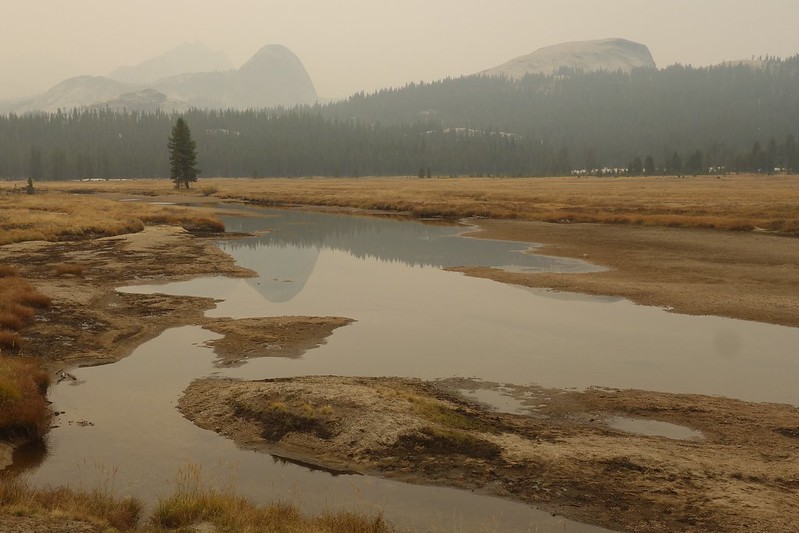
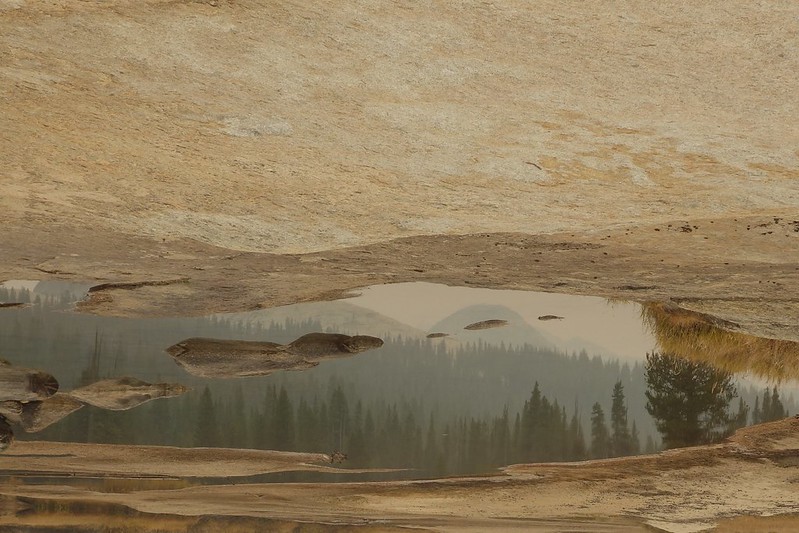


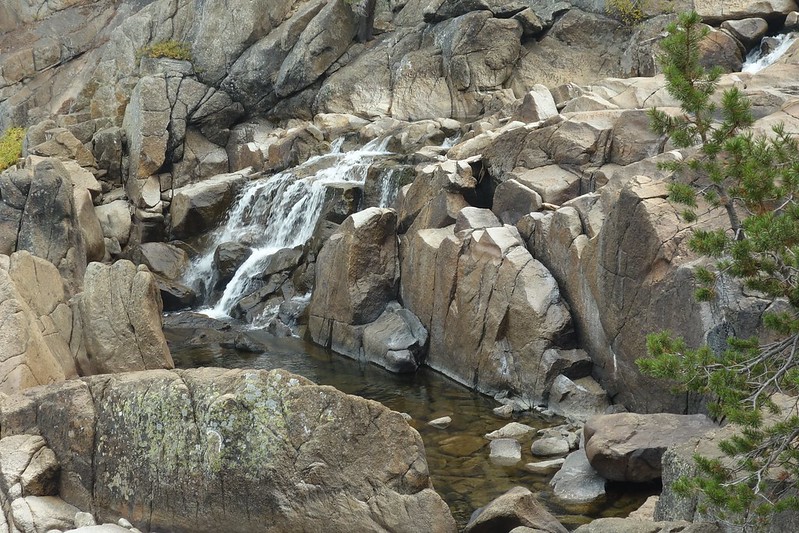
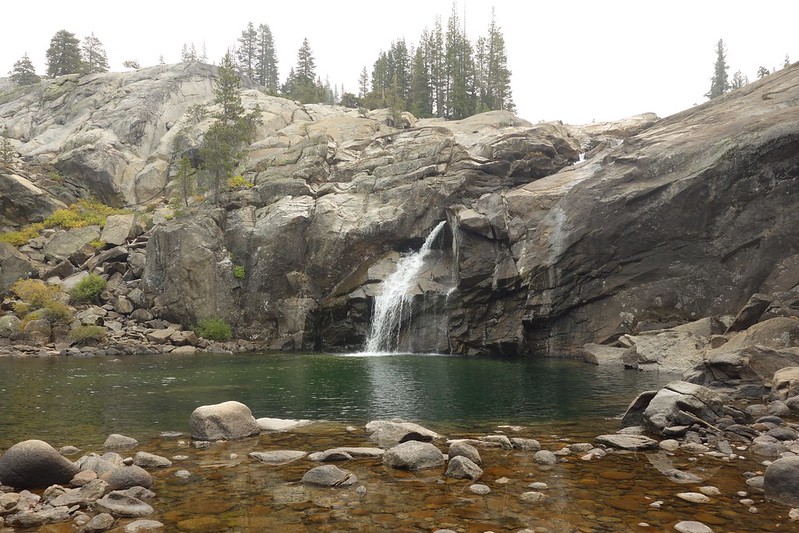

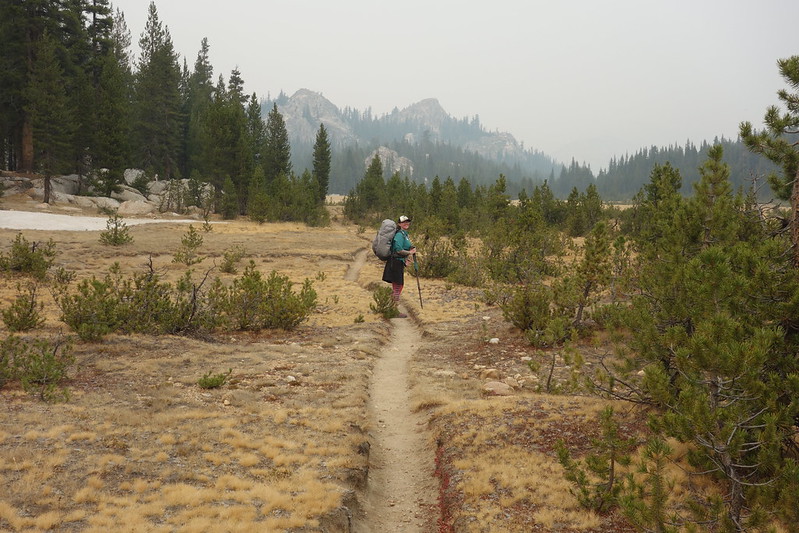
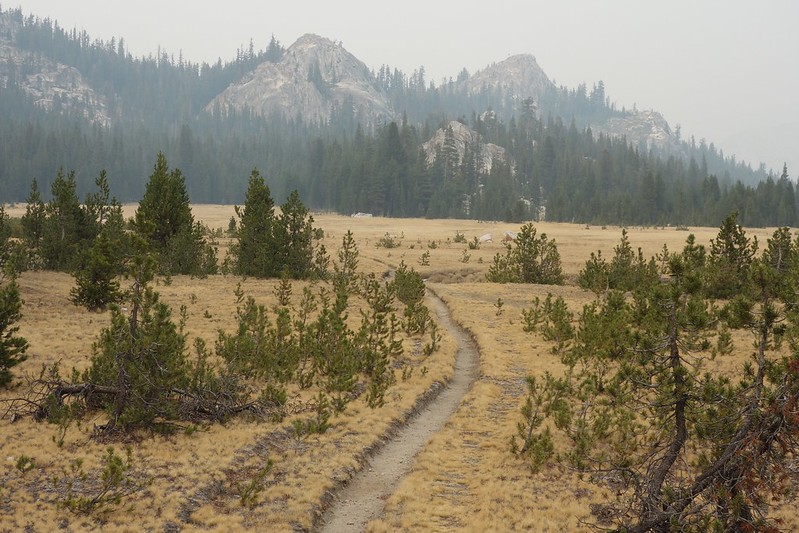
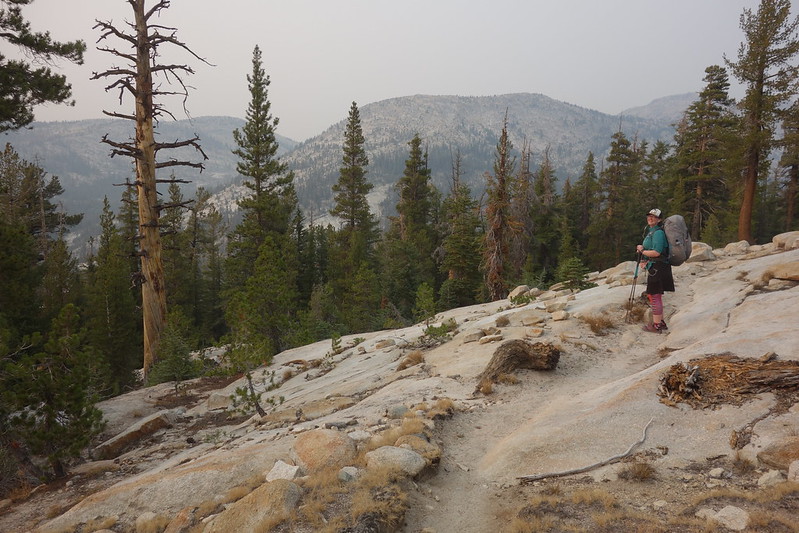



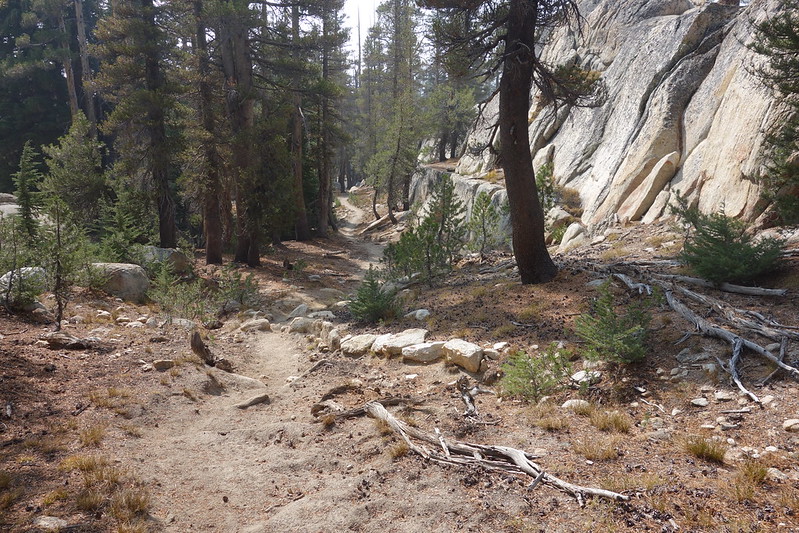
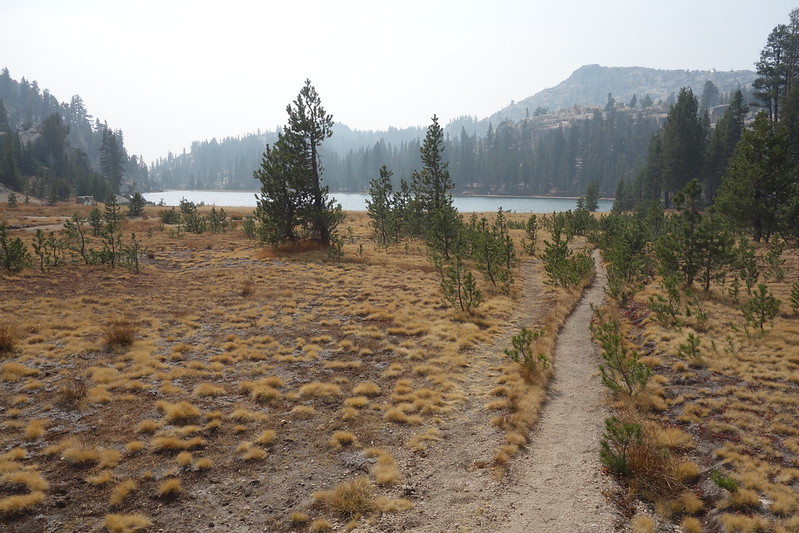

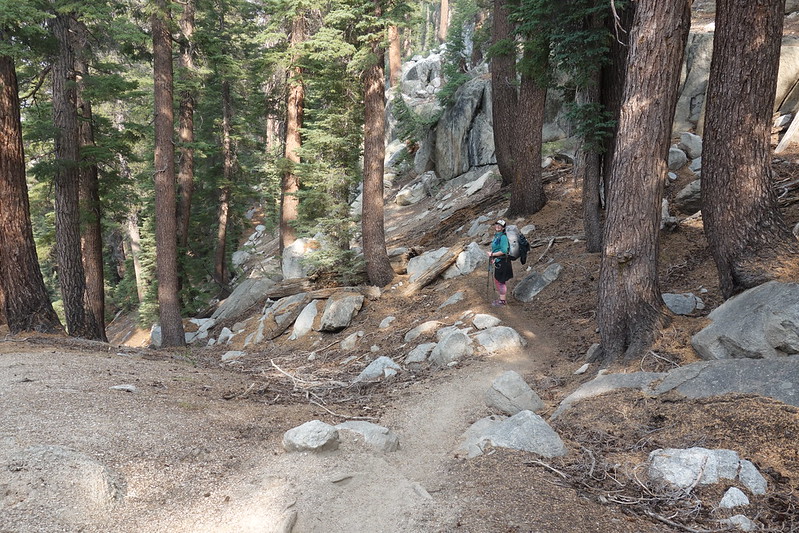

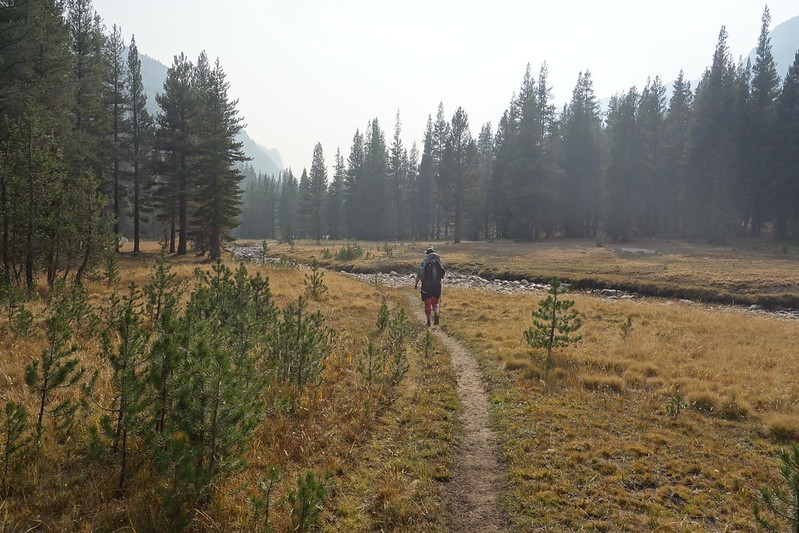

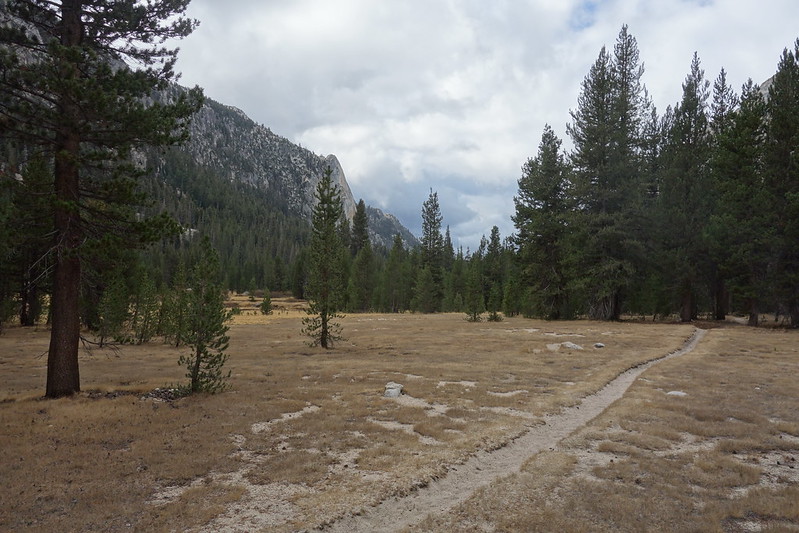

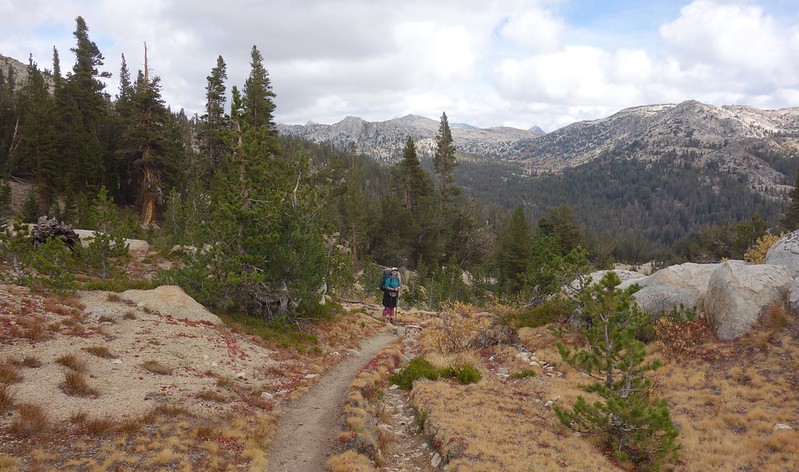
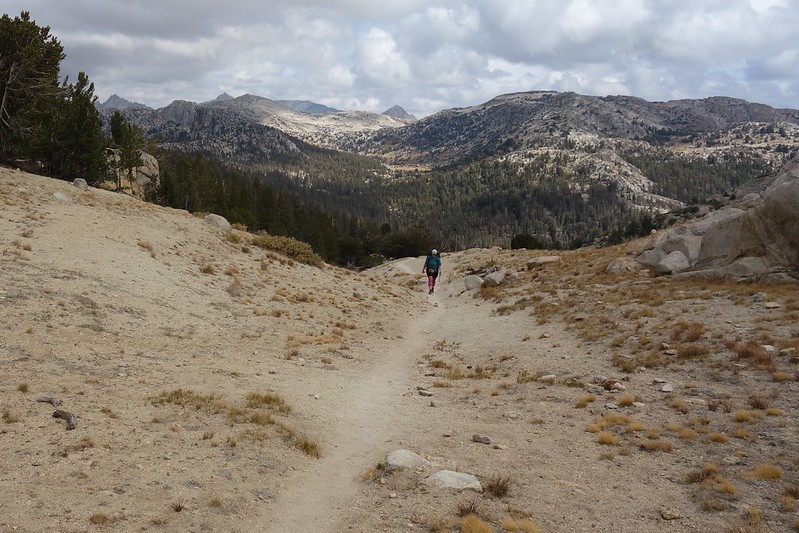
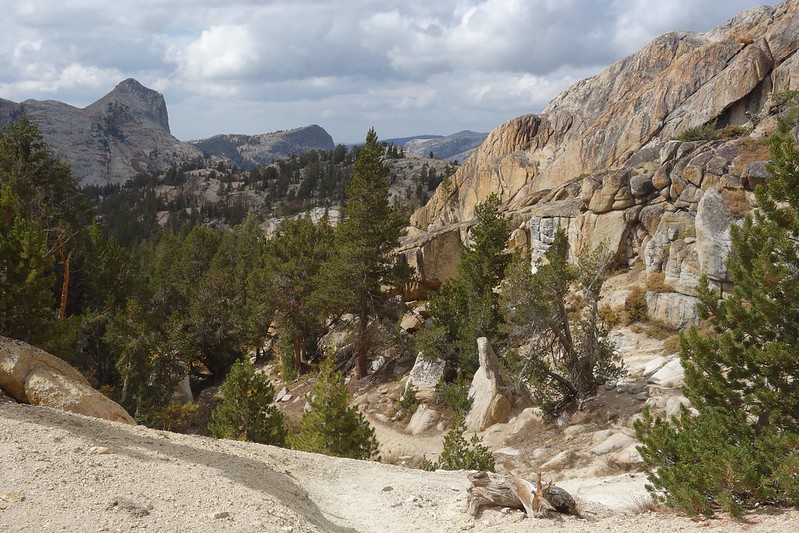





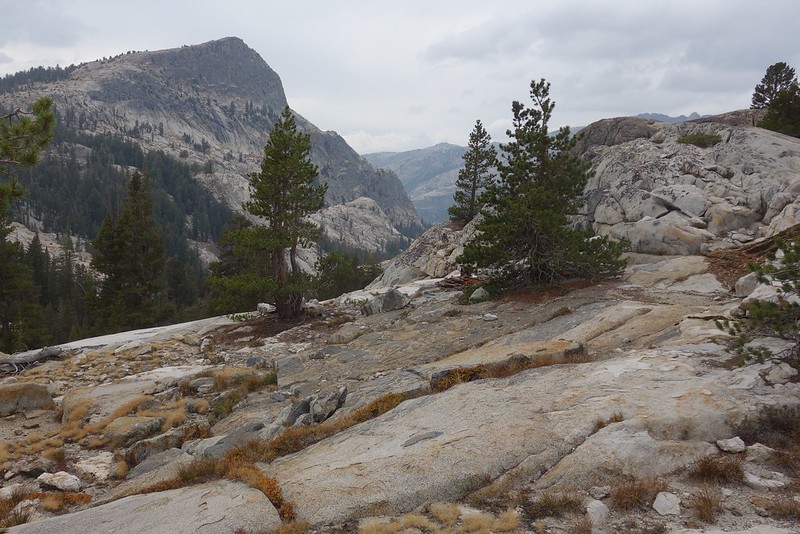



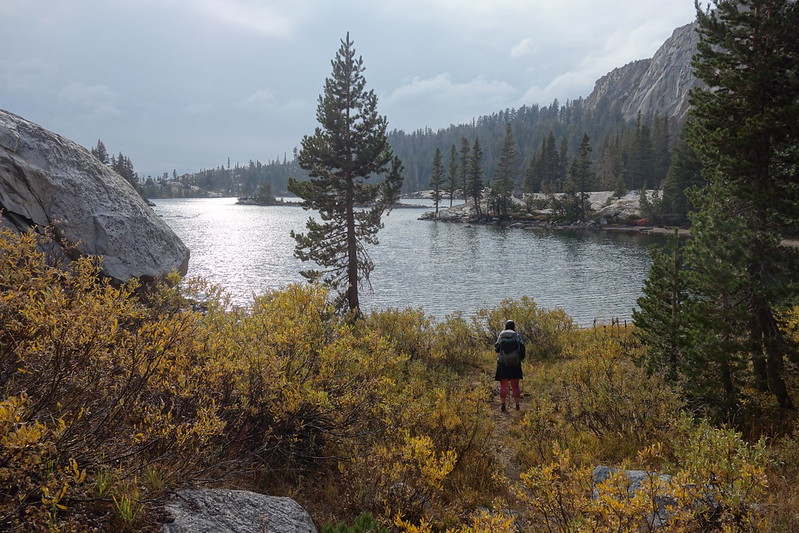


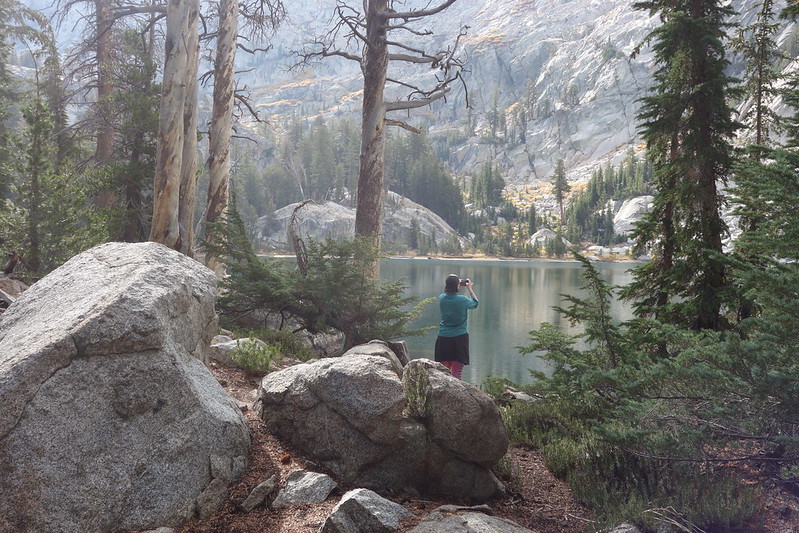
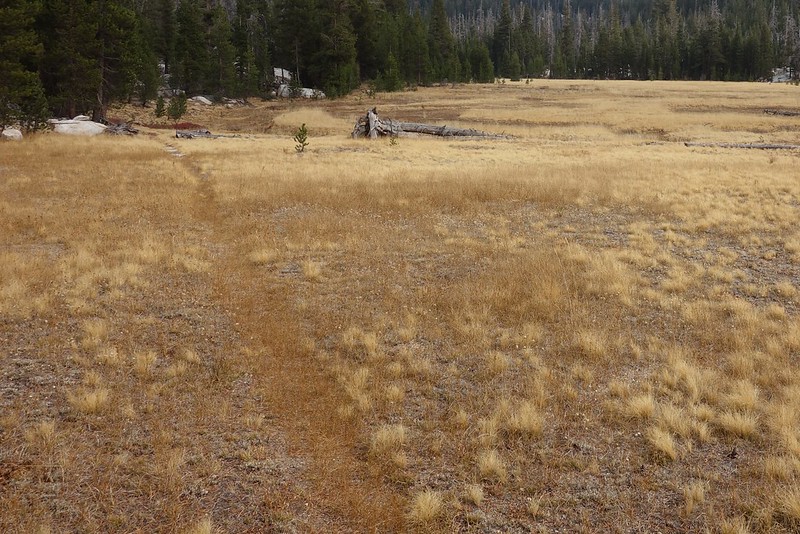

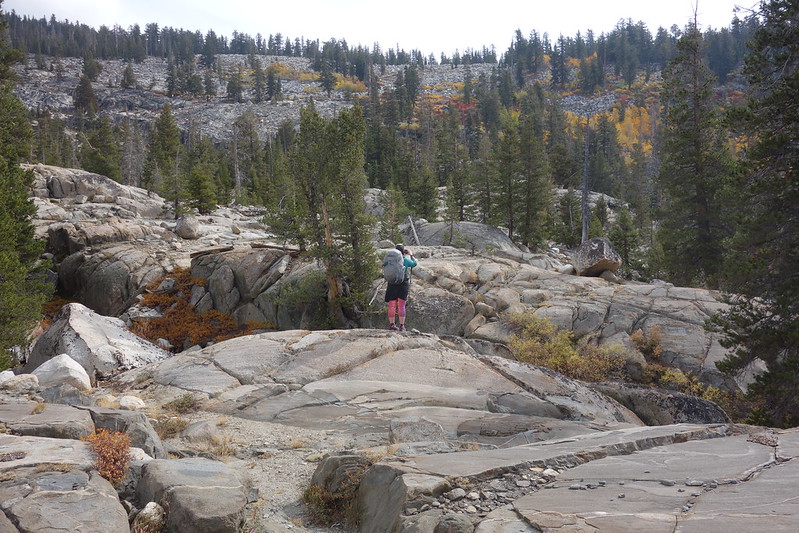




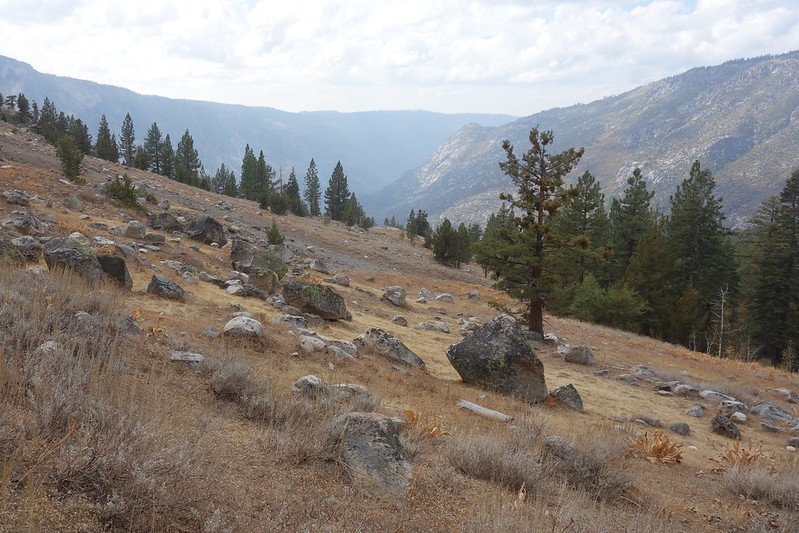



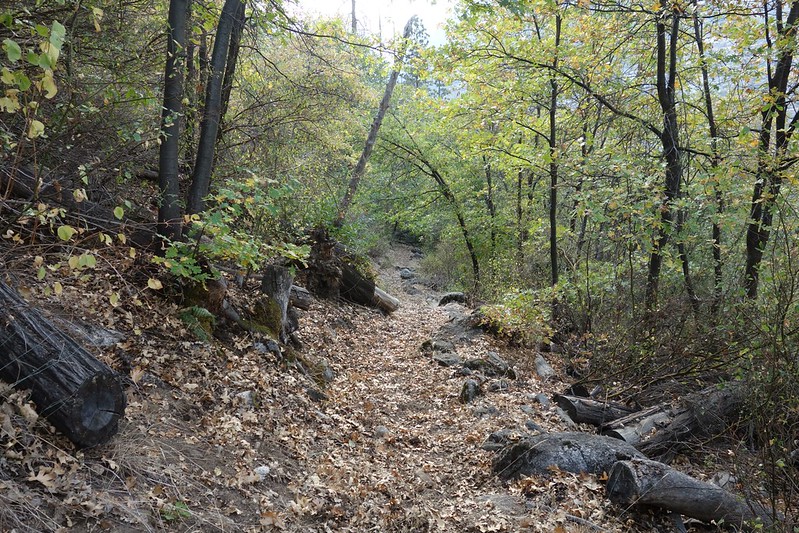
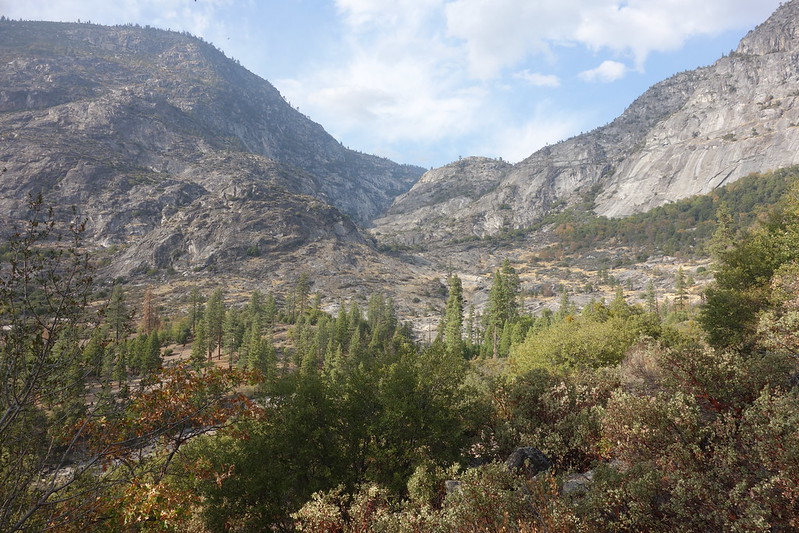
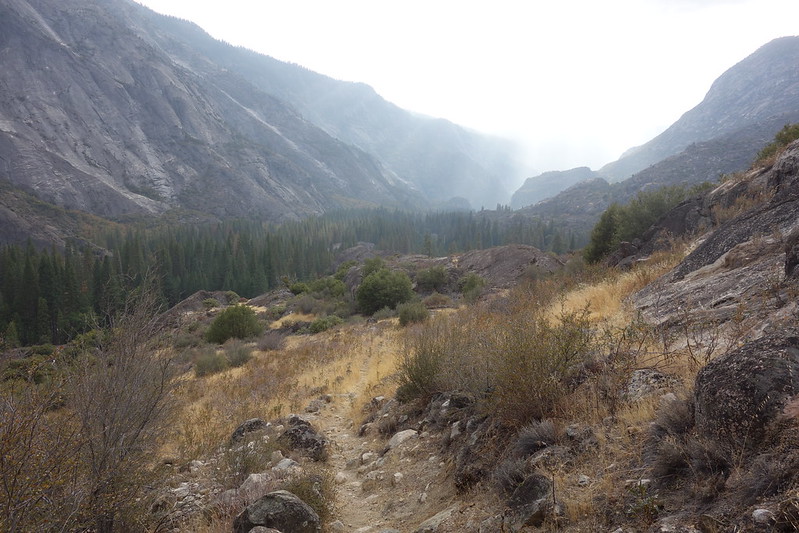
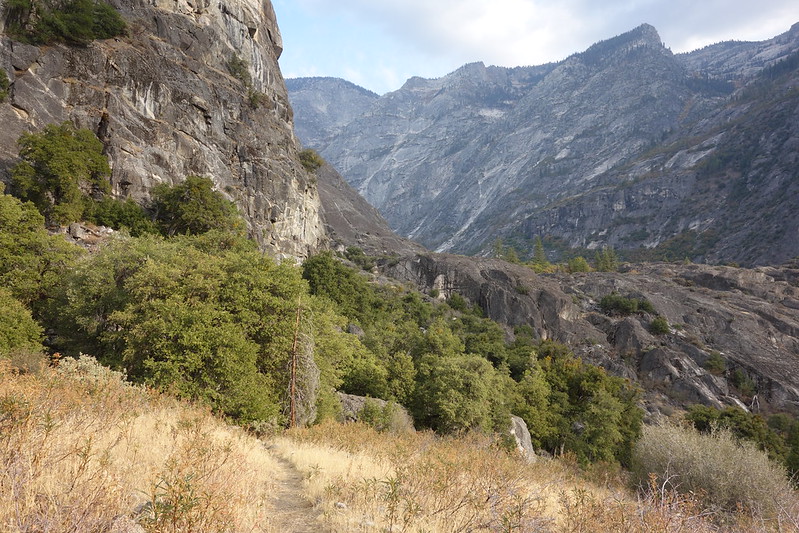

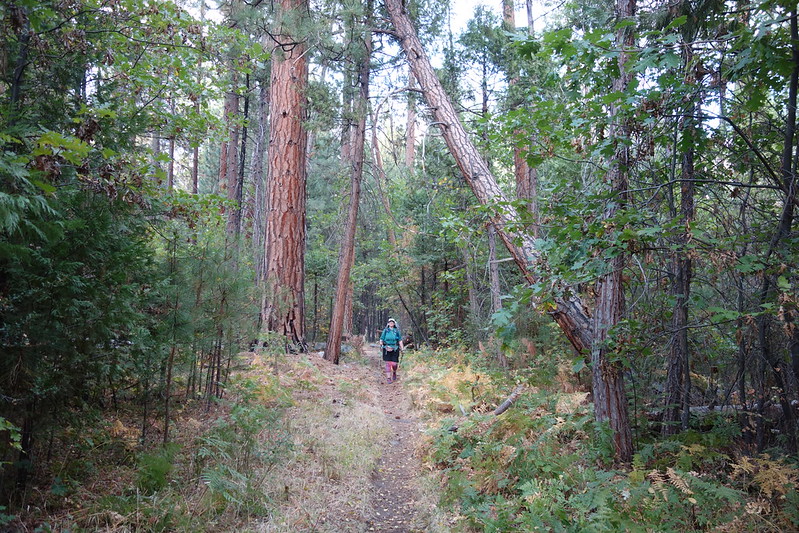






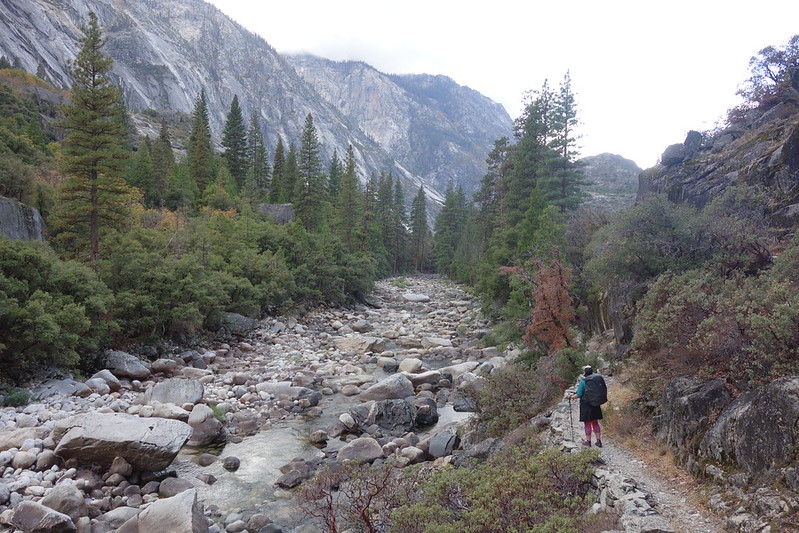

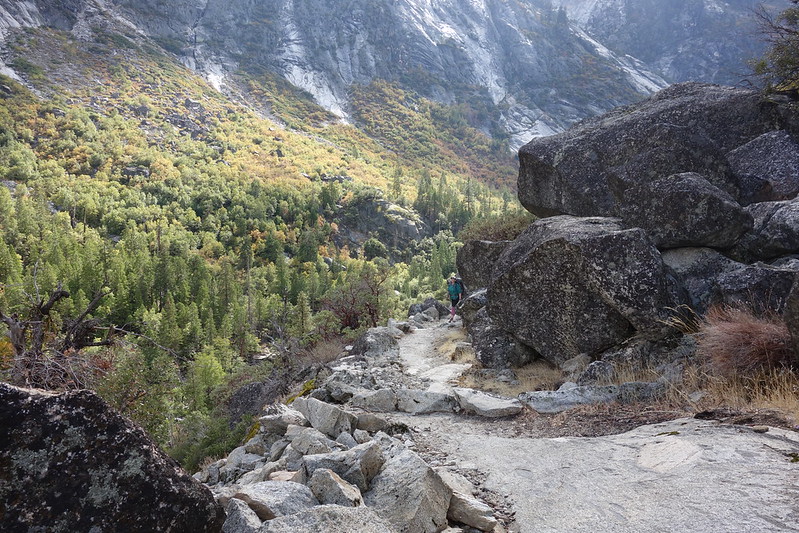
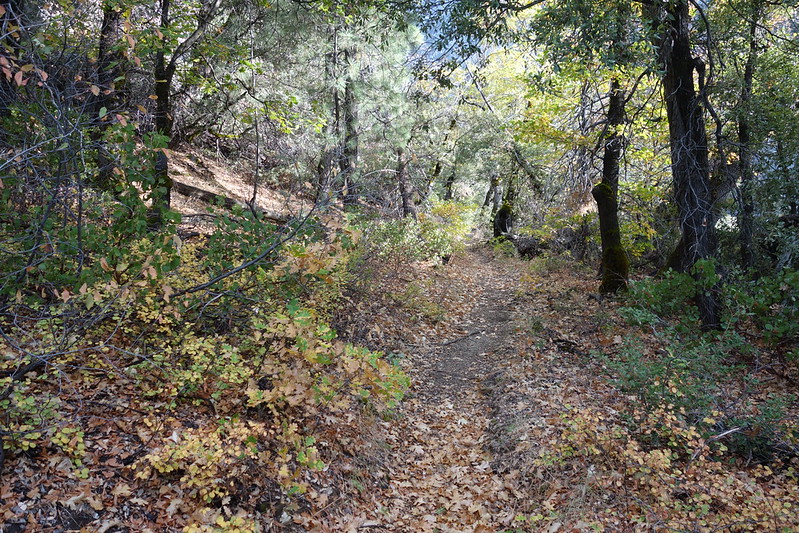


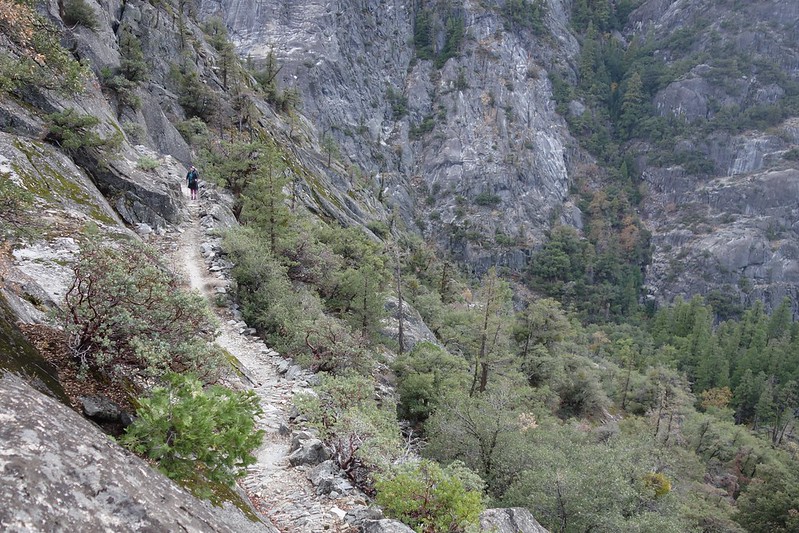
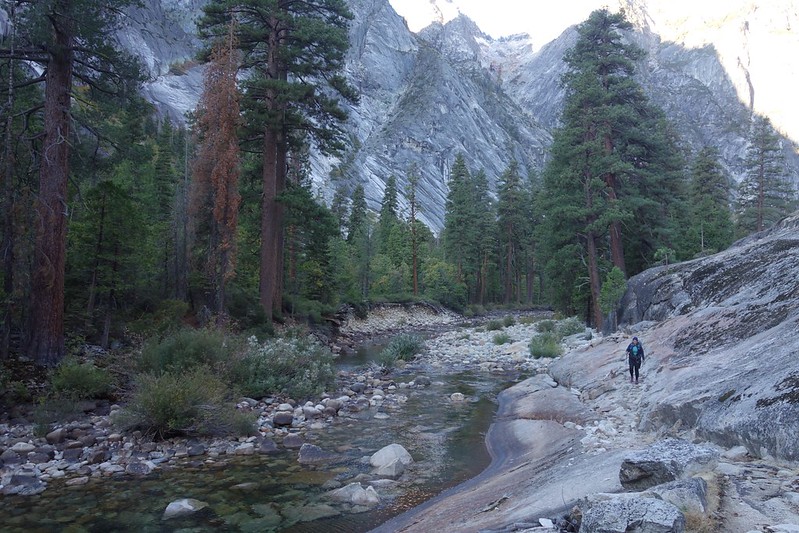


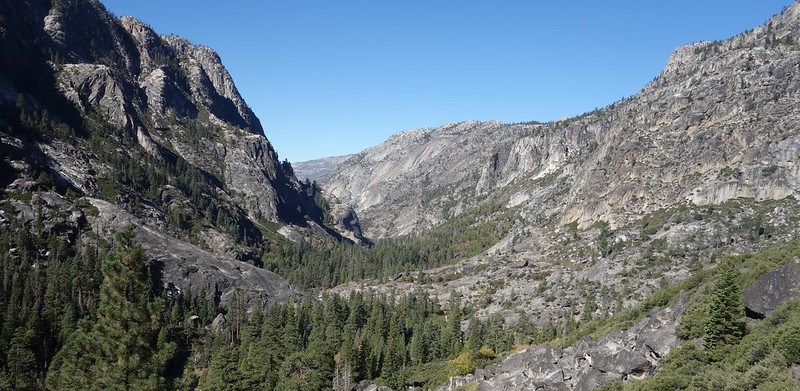
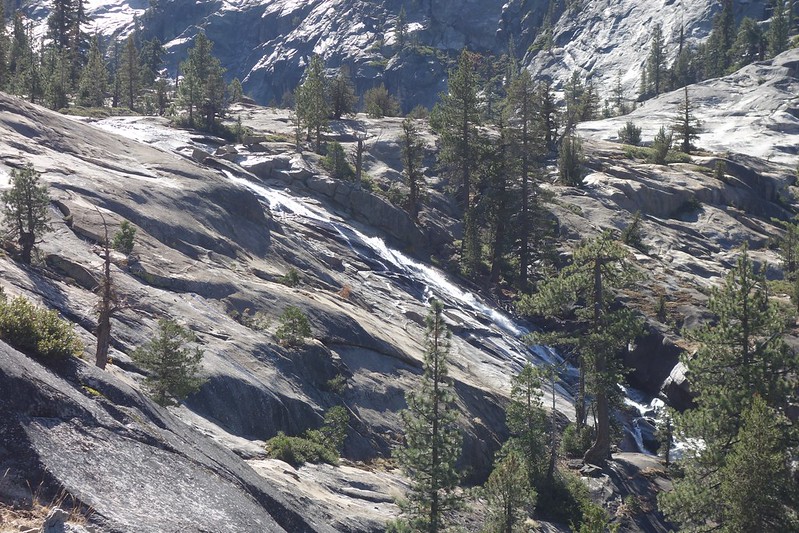


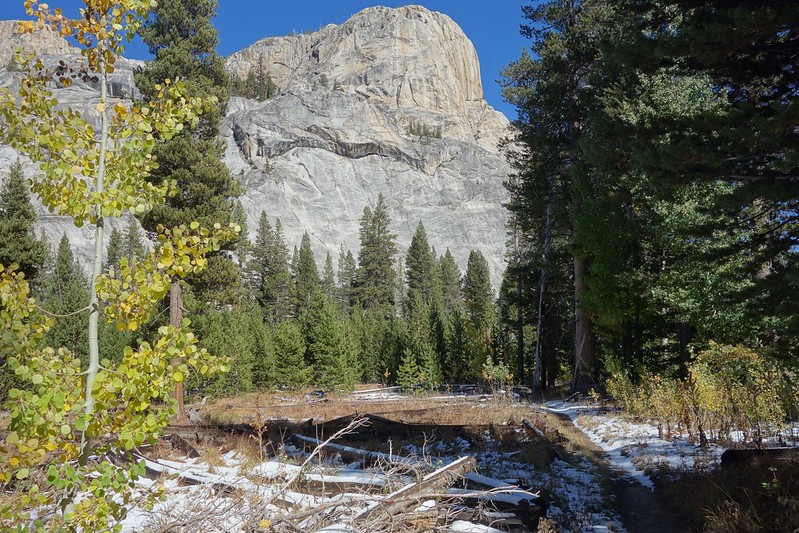



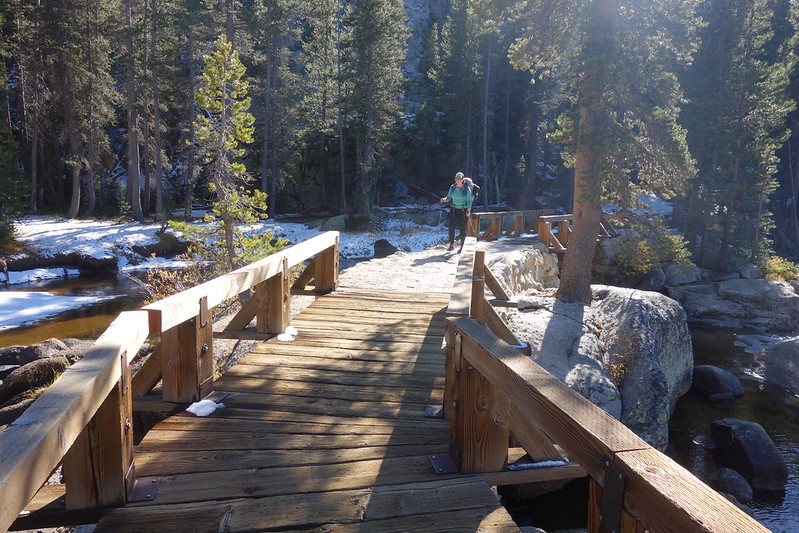


Robin,
As ever, your thoughtful accounts of the high country are deeply moving. Thank you for sharing them with us!
Lawrence Wheeler